To understand the true origin of the Nooitgedacht horse, one must first understand the origin of the Basuto pony and the Cape Horse. Like most breeds of the world; war, disease and socio-economic circumstances influenced the flow of genetics greatly.
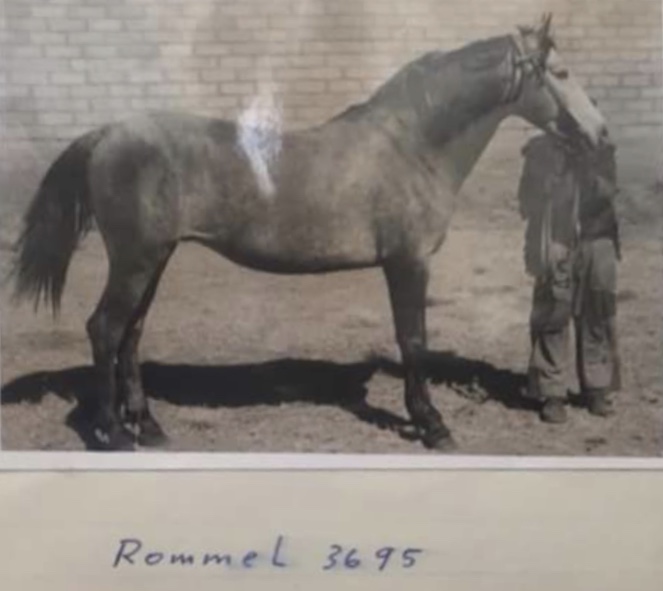
Cape Horse Connection
During Colonial times there developed a breed/type of light riding horse, as well as draught horse at the Southern tip of Africa called: the Cape (Riding) Horse and Cape Draught respectively. Today the Botriver/Kleinmond Wild Horses are believed to be the remnants of the Cape Draught whilst the legacy of the Cape Horse lives on in the Basuto, Nooitgedacht and South African Boerperd.
The Cape horse developed from the first horses that arrived in the Cape and documentation shows that they were Javan ponies, Barb (North Africa) and Arabian horses:
- 1653 – 9 horses – 6 stallions and 3 mares from Java
- 1659 – 14 horses – 10 stallions and 4 mares from Java
- 1673 – 2 horses – 1 stallion and 1 mare from Java
- 1676 – 2 horses – 1 stallion and 1 mare from Java
- 1683 – 4 horses – 2 stallions and 2 mares from Mauritius
- 1689 – 11 horses – 5 stallions and 6 mares from Persia
During the 1700’s a horse of a certain type started being established and that was the origin of the Cape Horse –“The animals were small, yet highly esteemed for their usefulness and though, lacking many good points externally, they possessed the good qualities of hardiness, endurance, excellent constitution and a temperament that combined great willingness, docility and steadiness.”- Bruce Dennill
The breeding of the first importations described in the archives of the Cape Colony was put as Javan ponies. The Javan pony is a descendant from Arab Studs imported by Moslems during the sixteenth and seventeenth century. The Cape horse, up until the importation of South American Spanish horses, and Thoroughbred horses, was a fairly pure Arab-Persian strain.
In 1778 a great number of horses were imported from South America and they were from Andalusian (Spanish) origin, these horses were imported as they were highly esteemed for their beauty, their gentleness and good service.
Even though the Cape Horse was primarily of Oriental blood, the Andalusian (Spanish Horses) was from here-on a strong influence. Though a relatively small number of Spanish horses came to our shores, they were revered by the locals and used extensively to upgrade the local horse-population. There are also stories of Spanish horses making it to shore after a freight-ship shipwrecked off the West Coast. Even-though these stories are most likely true it could not be verified with official documentation.
After this period the first English-blood horses came in 1782. Consisting out of 8 stallions with breed type unknown as it was not documented, but assumed to be Thoroughbreds. Later still a whole lot of different stallions were imported and documented after this from Boston, USA; New England, USA; and Brittain. They were documented as Thoroughbreds, Spanish horses, Morgans (interestingly the Morgan also has a strong Spanish influence) and Hackney horses. These horses had greatly influenced the Cape horse up to the 1850’s and possibly the source of the gaited gene in SA’s local breeds.
According to an article by Schreuder and Mackenzie (1935) horses were the first export product of the South African livestock industry. In 1769 there was a considerable amount of horses exported to the British Colony of India to serve as cavalry mounts and transportation. In 1854 they were exported to help fight the Crimian- war. The Cape Horse became legendary for their bravery in battle and hardiness even in the harshest conditions. What they lacked in size they made up for by getting their riders back to safety more often than their other counterparts.
From 1850-1899 there was a sizable, stable population of Cape Horses (also called boerperde in areas outside the Cape Colony); and the Basuto population was stable as well. The Settlers (called Boere – meaning farmers) were a melting pot of mainly Dutch, German, and French, British, Danish, Portuguese, and Italian descent. They had a horse-centred culture, an eye for breeding horses and depended on horses, donkeys and mules for their livelihoods. Remember South-Africa had no infra-structure like railways and tunnels – the animals used to transport people and goods needed to be tough. Good horses, donkeys and mules were considered a most valuable possession and were very well looked after.
After the Anglo-Boer war however the Basuto and the Cape horse populations were endangered by loss of quality and numbers. Cape horses were predominantly used in the Anglo-Boer war 1899-1902. The life expectancy of horses in this war was 3 months. Imported (most of them succumbed shortly after arriving by ship) horses also ,but mostly local horses died in their masses during the Anglo-Boer war. Vicious devices like the Caltrop were used to cripple animals used in warfare. Caltrops were made up of two or more sharp nails or spines arranged in such a manner that one of them always points upward from a stable base (for example, a tetrahedron). Many horses were thus crippled and then left behind by the soldiers fleeing for their lives. Because of the Scorched-earth policy of Lord Kitchener, these injured horse had very little to graze on and even if the local settlers did want to feed them their grain stores would have been burned. This was a terrible time in South African history, but not a unique situation since most breeds were affected to the point of extinction by war or the industrial revolution at some time or another.
The Cape Horse (also called boerperd outside the British Cape Colony) had an inherent resistance to the dreaded African Horse Sickness virus and were well adapted to the harsh conditions of the African continent. These characteristics together with their stamina, bravery and work-ethic made them superior to the European imports during the Anglo-Boer war. There was a concerted effort to eliminate or confiscate boerperde (consisting mainly of Basuto’s, Cape Horses and Arabian-Boerperd crosses) whenever the British came across them, resulting in serious declining numbers of the breed.
There were however pockets of Cape Horse/boerperde that stayed relatively pure despite everything and today we are still fortunate enough have the Cape Horse’s legacy living through the Nooitgedacht, Basuto and SAB.
Basuto Pony Roots
The Basuto pony originated from the Cape Horse. People of Lesotho acquired these horses as spoils of war and trade with the settlers. As a result of harsh conditions and in-breeding; there was a loss of height and nobility associated with the Cape Horse, and the Basuto pony largely replaced it. An extremely hardy and surefooted pony with great stamina and courage developed through natural selection in this harsh environment with its rocky hills and mountains and very little human intervention regarding horse-husbandry. From historic accounts and more recently genetic evidence it is established that the Basuto originated greatly from the Cape horse and this allows us to have more insight into the origins of the Nooitgedacht breed.
The following information depicts the influence of horses imported into Lesotho to influence the Basuto pony:
1893:- 1 Arabian stallion (Merzuk). Described “Chestnut Arab of the breed Keluban Jellabi of a strain brought
Egypt 40 years ago by Viceroy Abbas Pasha from Bahrein,originally from the Ajman tribe of Eastern Nejd”.
1901 – Great number of good quality mares from the Cape Colony, that unfortunately introduced diseases like
Droes, Strangles en Pleuro-pneumonia.
1902 – 7 Arabian stallions
1905 – 2 Arabian stallions imported from England
1907 – First Thoroughbred- Imperator
First Boerperd – Prince
1911 – 2 Thoroughbred: Cloverly, Tory by Toredo
1912 –Two stallions: Mormon, Pony Signal Hill
1913 – Thoroughbred: Sailor Boy, Bowden
Cape Horse: Shushn
1916 – Thoroughbred – Rhan leigh
1917 – Highland Pony: Glenbanvie
1918 – 2 Thoroughbreds: Gumshoe, St Andrew
1920 – 2 Thoroughbreds: Elf King, Physician
1928 – Very low quality horses imported – 1350 animals for £1855 , less than 2 £ per horse
1930 – 1 Thoroughbred: Landing
1952 – Only Thoroughbreds
1903-1905 – Arabian-era
1907-1930 – Thoroughbred-era
The Thoroughbred introduced a clumsiness however that would be fatal to a mountain dwelling breed like the Basuto and inevitably only the most surefooted animals survived. The introduction of Thoroughbred is today sited as one of the driving force to the massive decline in Basuto populations. The main reasons for the Basotho pony being on the brink of extinction was due to introduction of unsuitable horses into the genetic pool; introduction of diseases foreign to the very susceptible Basotho Pony; and the Great Blizzard of 1902.
The Nooitgedacht project was started as an initiative of the South African Department of Agriculture to save the famous Basotho pony from extinction and to breed a farm/work/riding horse, indigenous to the region.
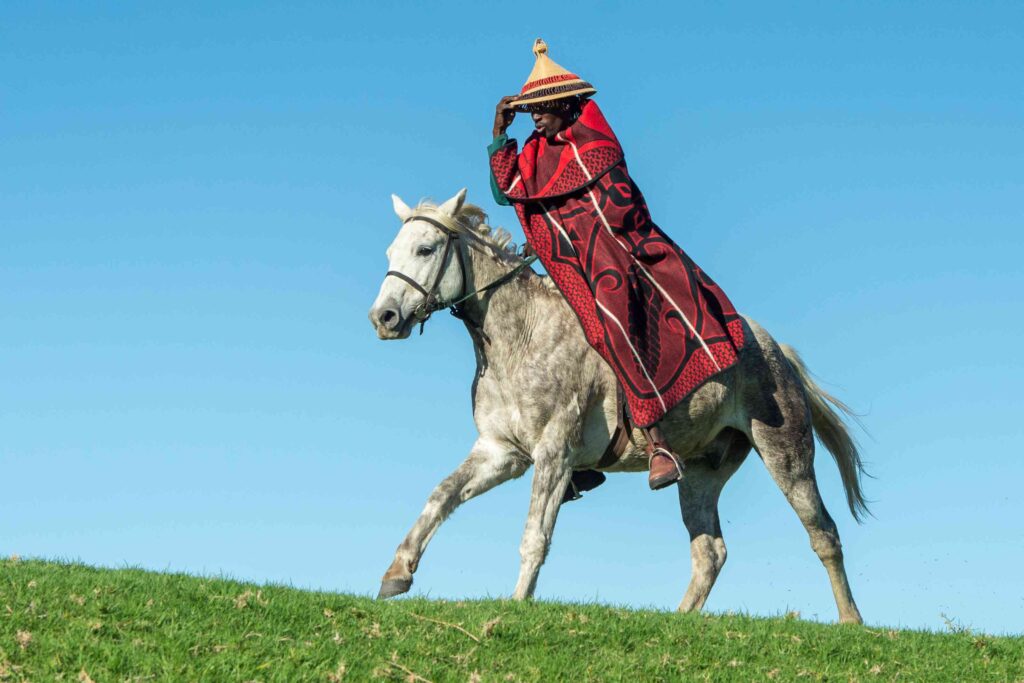
Developing the Nooitgedacht Breed
The Nooitgedacht came into being when the Secretary of the Department of Agriculture were given the memorandum by an official of the Department, in 1946.[1] The official, Mr. A.W. Lategan, made a strong case that the indigenous stock of different species of domestic animal are facing extinction. He went on to argue that if the Government did not support projects to retain these animals, a part of our South-African heritage would be lost to coming generations.
The following domestic animal species were on his list that faced extinction.
- Cattle:-
- Uys-cattle
- Zulu cattle
- Afrikaner-cattle with their unique milk-characteristics
- Equids :-
- Basuto ponies
- Boerperd
- Boesmanland donkeys
- Sheep:-
- Boesmanland Afrikaner Sheep
- Namakwa Sheep
During a meeting on the 27 December 1951 the Secretary of Agriculture decided that a committee consisting of Prof F.N. Bonsma, Mr. Lategan and Prof. Bisschop, had to arrange to acquire at least 2 Basuto stallions en 6 mares from Mr J.A.N Cloete (Hasiesfontein, Molteno). The budget for acquiring horses were £1000.And that the acquired horses shall be kept on the Veterinarian Research Station, called Nooitgedacht, near Ermelo.
The project started in 1952 (Development phase: 1952-1965) on the Veterinary Research Station called Nooitgedacht. Development of the breed started in 1951 with a relatively pure genetic pool (of sufficient type) of Basuto-origin horses. Six broodmares (Patrys 1, Patrys2, Steenbok, Kwartel 2; unfortunately the other two mares perished) and 1 stallion (Vonk II) of J.A.N Cloete’s stud, near Molteno , on the 19th February 1952. Mr J.A.N Cloete kept good record of the horses he bred. The Cloete-horses were already very strongly related; all claimed to be progeny of a single Basuto Stallion (Punch) brought from Lesotho in 1902.
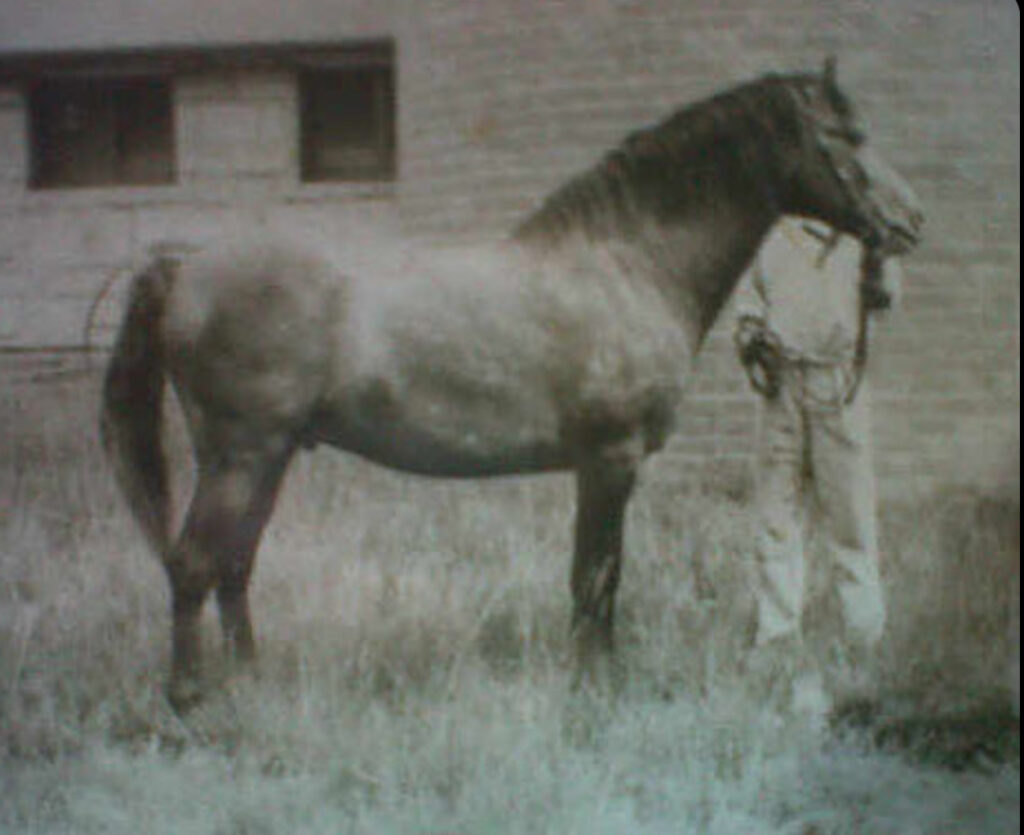
Dr Nien Barrie (Veterinarian and Official overseeing the Basuto Pony Project) realised early-on that the initial breeding-stock were too in-bred and they went in search of supplementary stock again. Mr A.J. Lategan found 5 mares from Mr Willemse (Giddies Hope, Memel District) of sufficient Basuto origin and type. Very little information is available about the Willemse mares. The Committee selected 5 so-called pure Basuto-mares from Mr Willemse’s herd namely: Violet, Miesies, Nonna, Ounooi and Bloubok. Four of the mares were bay and only one a very dark dapple grey (the Cloete-mares were all grey) ranging between 14hh -14.2hh. The Willemse-mares are all referred to as Pure Basuto’s, except Bloubok; she was referred to as a Basuto-cross in the documentation. Even-though the Willemse-mares clearly was related to each other somewhat, at least the likelihood of them being related to the Cloete-mares were very low.
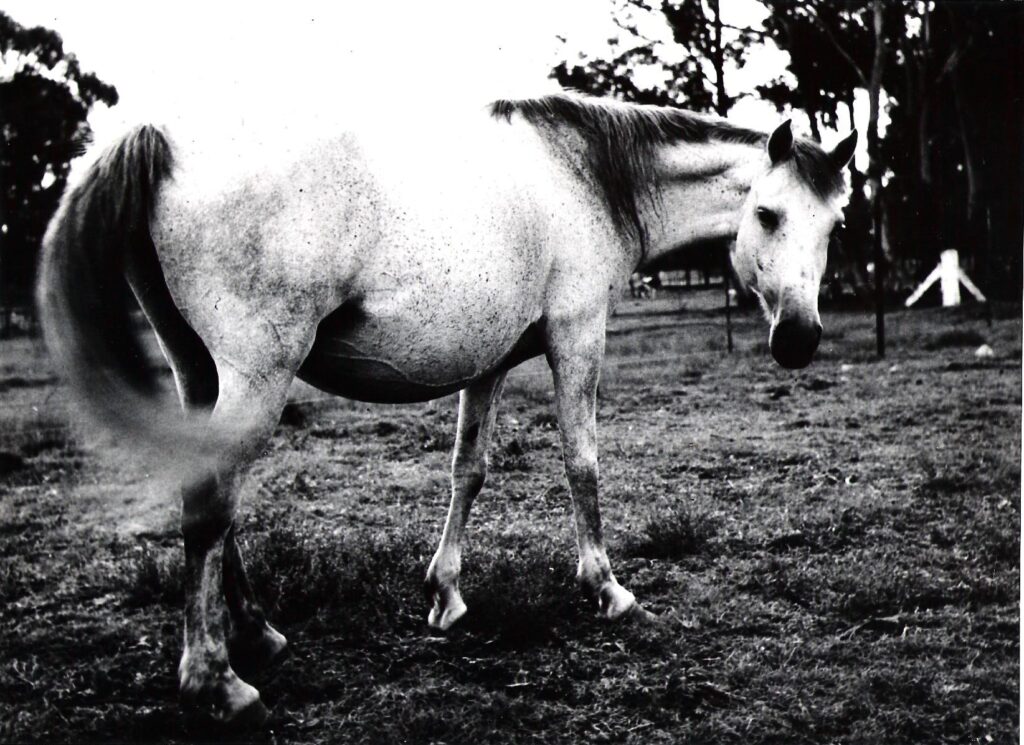
Establishment Phase(1952-1965)
Thus begun the Establishment-phase of the then named Basuto Pony-project. Selection criteria was very strict and only 1 in 4 foals made the cut to be used further in the breeding programme. Soon it was decided that there was not sufficient quality stallions with predominantly Willemse-blood to use on the Cloete-mares and the Committee went in search again for suitable stallions to be used solely on the Willemse-mares. This time they decided to use the pure-bred Arabian stallion, Rommel (Mr RP Botha (Viljoenskroon, Free State); as well as boerperd-Arabian cross stallion, “Defense” (a son of the pure-bred Arabian stallion imported by Gen Louis Botha) owned by Mr PJ du Preez (Ermelo-district).
Dr Nien Barrie were very aware that the use of Arabian stallions would dilute the Basuto-type toward an Arabian-type. As far as can be determined he was also the first to lobby that the project should be renamed from “Basoeto poon projek” (Basuto Pony Project) , rather to the “Nooitgedacht ryperd projek” (Nooitgedacht Riding-horse Project).
Consolidation Phase (1965-1975)
Eight daughter studs(G.G.Triggol,H Ahlers,W.J.Engelbrecht,J.G.A. Davel,G.L. Roos,PE Le Roux,A. Van Wyk,C. Jacobsz) were established on selected farms to increase the population and help with further development. The Nooitgedacht farm was running out of space and there were increasing pressures regarding the financing of the Basuto Pony Project. Participants were pre-screened and each “new” stud were sold (R80/stallions and R50/mare) a breeding unit consisting of one stallion and two mares. By the end of 1967 there was already 8 daughter studs and by 1968 another 4 studs were established.
During 1967 under the tutelage of DA (Department of Agriculture) the “Nooitgedacht Indigenous Pony Breeders Society” (“Nooitgedacht inheemse ponie-telersvereniging”) was established with Mr. J. Triggol, H.Ahlers, C Steenkamp en W. Bosman as the founding committee members. They were tasked with recordkeeping, affiliation with SA Studbook, shows and Inspection Duties.
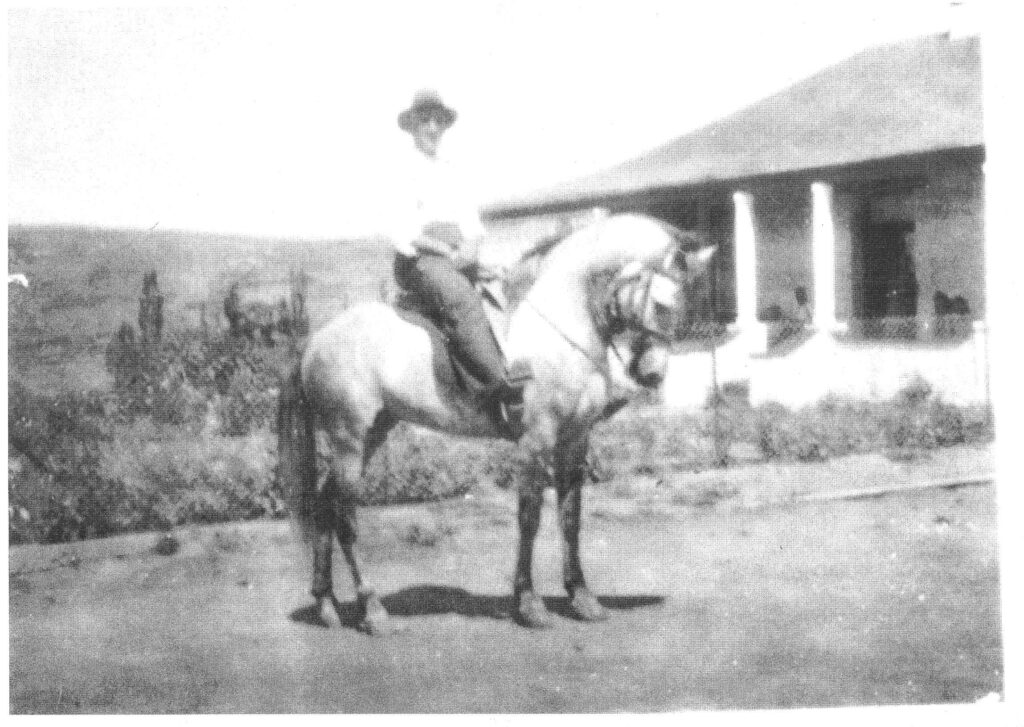
Expansion Phase (1975-1990)
In 1976/7 the then state-run project was sold to private breeders that maintained and upheld the breeding-standard. The Basuto-Project at Nooitgedacht research farm abruptly came to an end: During 1976 more than half of the stud were sold at a dispersal auction. In 1977 the core of the stud was sold. At this stage there was still enthusiasm for this unique indigenous horse breed with its exceptional temperament. Prices at auction was notably high and a new era was entered with the expansion phase of the breed held entirely in private- ownership. As a footnote, it is interesting that even before the final dispersal sale of the Nooitgedacht research farm’s stud there was an auction held to sell Nooitgedacht Ponies bred by the daughter studs. At this auction the daughter studs’ garnered higher prices than the mother-stud.1984 saw the year that the Nooitgedacht was officially recognised as an official unique breed internationally. This marked the expanding phase that lasted until 1990.
This phase were characterised by prolific interest in the breed. University of Stellenbosch and University of Pretoria both owned active Nooitgedacht Studs. Nooitgedachts were seen showing, endurance riding, and doing “kommando”- trips (some for more than a week) and reporting on such events were a regular occurrence in the media.
True to South African style there were some name changes….
Initially it was decided to call the breed Nooitgedacht Ponieperd (direct translation would be Nooitgedacht Hony – quite appropriate if you think about it); then in the 1970 it was changed to Nooitgedacht Ponie (direct translation: Nooitgedacht Pony). As it goes in the Equestrian industry the negative connotation to the word Pony was shunned by some and it was decided to drop the Pony part and to this day they are called Nooitgedachters (Afrikaans) or Nooitgedacht (English).
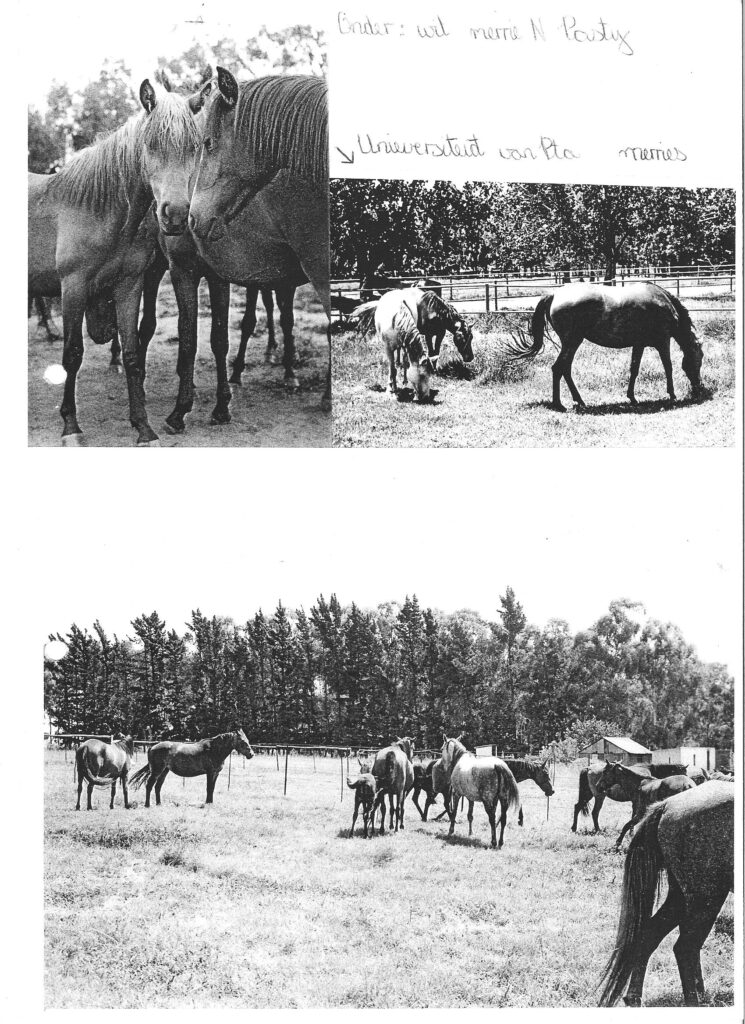
The Nooitgedacht-Iberian Connection: Maintaining genetic diversity to ensure population stability
Because the Nooitgedacht is a relatively “young” breed, inbreeding (due to lack of genetic diversity) is a threat to the stability of the Nooitgedacht population. The Nooitgedacht still has a semi-open studbook that relies heavily on
Up-grading breeding system and the correct functioning of Inspections by a qualified Selectors’ panel.
The Up-grading breeding system functions similarly to many European Warmblood Studbooks, in that any suitable horse may be presented to the Selectors for admission to the appendix studbooks. Only SP (Studbook Proper) animals can upgrade a bloodline through the different appendix studbooks. These Appendixes includes and follows congruently: Basis Animal – Appendix, A-Appendix, and B-Appendix. Basis- and A-appendix are considered Part-bred Nooitgedachts whilst B-Appendix and SP are considered Pure-bred; especially in breed-show terms. All foals of registered stock are birth notified and then receives Foalbook status. Only on presentation to the Selectors and passing of Inspections horses will receive their “breeding rights” with Lifetime Registration. In the event that a horse passes Inspections with a mark higher than 85%, they receive “Meriete-keuring”. It takes at least four generations for a new bloodline to be bred up to Studbook proper level and at any time during this process the line may be terminated in the event that it compromises the Breed Standard of Excellence.
Breed Characteristics – Standard of Excellence
The Nooitgedacht should first and foremost carry a golden thread of hardiness, toughness, bravery, ride- and train-ability, as well as a remarkable even-keeled temperament. What makes a Nooitgedacht’s temperament so remarkable is that they have an unequalled love of humans and when handled fairly they will be undyingly loyal. Relative to some other breeds the Nooitgedacht should almost give the impression that it has been worked with before even if they have never had human contact.
Bravery is also a very sought after trait in the Nooitgedacht; this paired with their emotional stability, makes them extraordinary hunting, mounted archery, eventing, extreme trail, working equitation and similar equestrian activities. These traits also makes for excellent mounts for children and lady riders. I have yet to meet a man that needs to work cattle/sheep/wildlife with a horse that do not rate these traits high as well. Thus the Nooitgedacht makes perfect all gender mounts.
Nooitgedachts may range between 13.3hh and 16.2hh. There are definite pony and horse-sized variation within the breed. They should have great weight carrying capacity. Depending on conformation a 14.1hh Nooitgedacht can carry a 70-80kg person without detriment to their soundness.
As with most working breeds; form had to follow function and certain conformation characteristics are not necessarily any different to other working breeds. The horse should be well proportioned; with sloping shoulder, similarly sloping hip and a short but well-muscled back. Nooitgedachts need to have a level or up-hill appearance when seen in profile. A deep heart-girth are preferred and indicates its lung-capacity and stamina. A hindquarter that steps easily under the body and can fold to take the brunt of the rider’s weight is a very sought after trait.
Legs must be clean, dry and straight. Short cannons and somewhat shorter pasterns are needed to handle rough terrain. Medium sized hooves need to be tough, hard and somewhat more upright (in line with the pastern angle), with a higher heal than in some other breeds. This enables a horse to navigate rocky terrain better and to stay sound over such terrain.
The tail-set reminds of its oriental ancestry and may be carried high when excited.
A somewhat higher neck set, than for instance in a Quarter horse are preferred, carrying a relatively small but noble head. Ears should be refined and alert. There should be ample space between large, expressive, soft eyes; giving the impression of a broad forehead but still running into a finer muzzle. Lips must be fine and dry. Jowls must not be overly big, causing a pinched look. Nostrils should remind of its oriental heritage, enabling effortless breathing.
Everything about the Nooitgedacht should be functional and at the same time utilitarian and elegant. The type of horse you know won’t break when needed to do farm work but still beautiful and versatile enough to show on weekends.
Movement should be economical, sure-footed, effortless and floating. Breeders that needed a work horse over tough terrain, found that a horse that knows how to use his body stays sound in such environments. The horse should find it effortless to climb mountainous terrain as well as extend their gait on the flat in order to make short change of long distances.
Because of their Basuto and Cape horse ancestry the Nooitgedacht may be gaited. Eventhough the rack and tripple are not a pre-requisite or seen these days so much in the show ring; the extra gaits come in very handy when needing to cover great distances over tough terrain. With the extra gaits a horse always has one hoof on the ground, making for a more stable and surefooted traveling experience.
The Nooitgedacht should find it easy to collect and extend in all gaits because of their balanced conformation. Exactly for this reason they are also doing very well in dressage, western dressage and showing.
Traditionally flashy white markings are not preferred, on account of pink skin being more prone to sunburn. Different shades of Black, Bay, Chestnut, Grey, Palomino and Buckskin (ie solid colours) are able to be registered. Because Nooitgedachts need to be able to survive outside 24/7, unpigmented skin are frowned upon somewhat. A horse carrying little to no white markings would have been the traditional ideal, but in recent years this has changed somewhat. Double dilutes, paints, LP-gene carriers and blue-eyed horses are not permissible to be registered.
The Nooitgedacht should have an unrivalled constitution. Keeping condition even when grazing is scarce or not as palatable. It should also be mentioned that they have excellent turnover of energy from roughage and therefor care should be taken not to overfeed with concentrates. They are more resistant to endemic diseases and can handle the extreme heat of the Northern Cape, cold wet winters of the Western Cape as well as snow of the mountainous regions of SA. Their adaptability to climate and grazing ensures their survival as a breed. The Nooitgedacht also are one of the breeds with the best longevity, working and competing without detriment well into their 20s and some even into their early 30s. They are very fertile and mares are excellent mothers with ample milk production. Some broodmares have enough to raise more than one foal. Especially these characteristics are ones breeders should look after very well, because this is what sets the Nooitgedacht apart from their imported counterparts. Due to most breeders still raising their horses extensively with minor human inputs, we are still lucky to be environmentally tested. Horses that find it difficult to do well in our SA environment are not preferred as breeding stock.

What can you expect when working with a Nooitgedachter?
When backing these horses and ponies it is easy to forget that they are not fully schooled yet.
They easily get what their handler wants and are total people pleasers. They comply easily, especially when they understand the purpose of the request. However they do not take well to bullying tactics. They are however very forgiving and when an honest mistake is made on the handler/rider’s part they are quick to forgive and don’t bare grudges.
When they are intentionally harmed they do tend to never forget even years after the fact. The Nooitgedacht should look after their rider’s safety, since their own safety are also important to them. They are quick thinkers without being silly or flighty.
Most Nooitgedachters tend to like to be cuddled and this characteristic will melt any child or adult’s heart. Many a visitor have noted on the fact that even the unridden/unhandled Nooitgedachters are friendly and inquisitive. Nooitgedachters are also very intelligent and tend to think they are part of the household…. walking into a living room or a kitchen to the consternation of the human residents are not rare.
If you are looking for a horse with character that loves human interaction then the Nooitgedachter is the breed of choice.
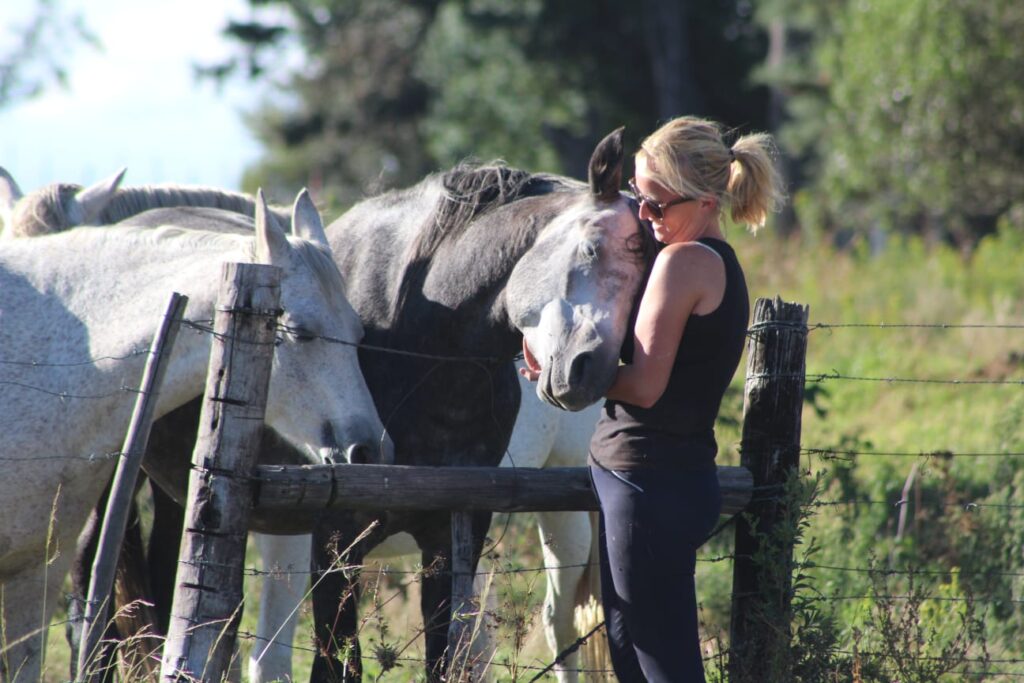
Written and researched by Maret van Rensburg
